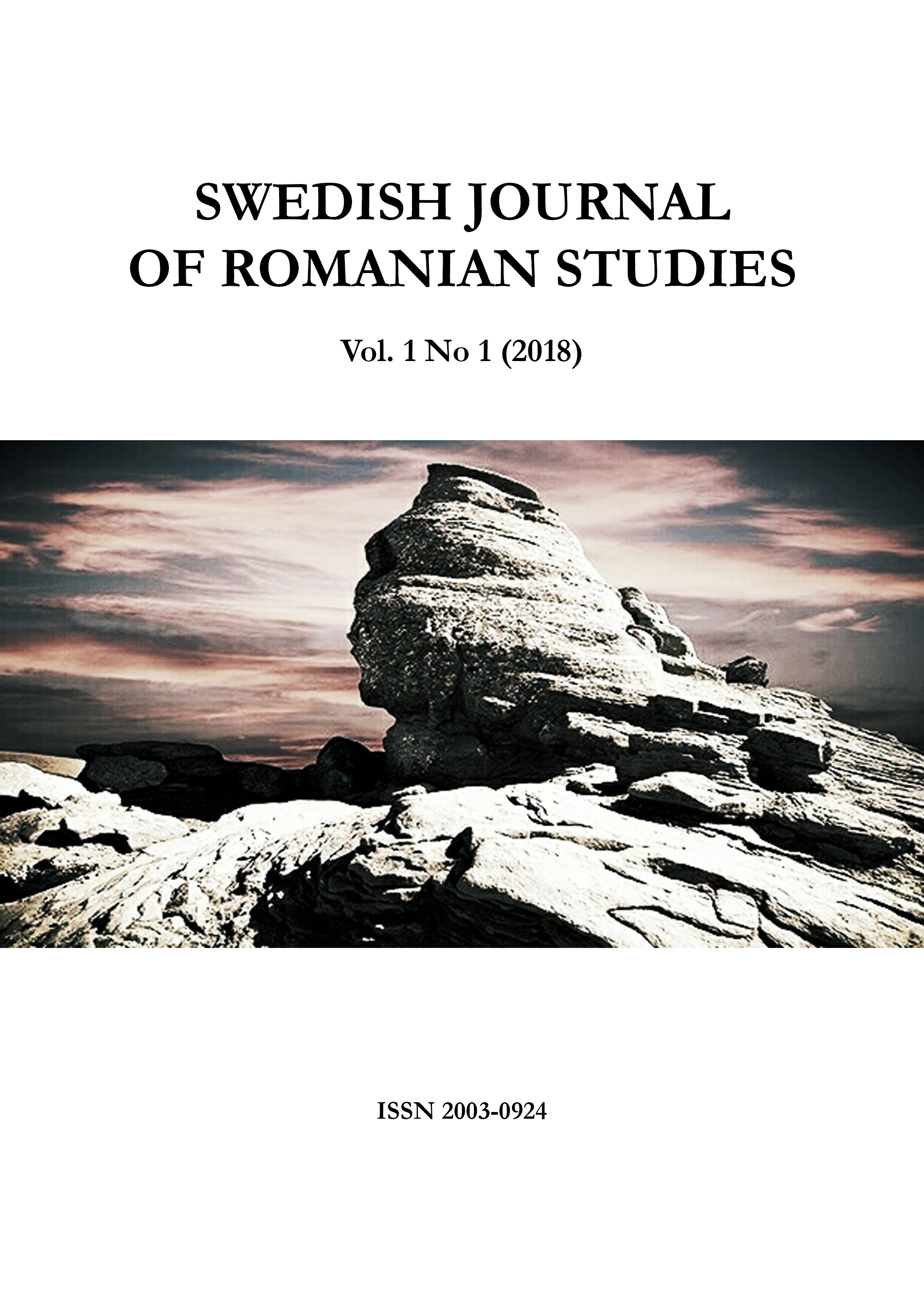Culorile Noului Val Românesc. Simbolism și semnificații psihologice / The Colors of the Romanian New Wave. Symbolism and psychological significance
DOI:
https://doi.org/10.35824/sjrs.v1i1.16806Keywords:
Romanian cinema, color analysis, color psychology, color symbolism, Romanian New WaveAbstract
Recent Romanian films continue to be appreciated by critics and to receive important international awards. This, along with a series of common techniques and themes, led to the emergence of the term "the Romanian New Wave", a term assumed by some critics and directors and rejected by others. In this article, I aim to check if the use of colors is a technique that characterizes the films reunited under this umbrella term. In order to do so, I analyzed five films from different years but overall accepted as part of the New Wave. These are Marilena from P7, 4 months, 3 weeks and 2 days, Best intentions, Child’s Pose and Self-Portrait of a Dutiful Daughter. I was interested in discovering the symbols associated with each color, while also emphasizing their psychological meaning. Another goal was to check if and how the chromatic aspects were related to the social reality presented in each movie. Finally, I presented the common features of the films and the differences between them.
References
Essential Films For An Introduction To The Romanian New Wave. (2014). Taste of Cinema - Movie Reviews and Classic Movie Lists. Retrieved 30 September 2017, from http://www.tasteofcinema.com/2014/15-essential-films-for-an-introduction-to-the-romanian-new-wave/
Bellantoni, P. (2005). If it's purple, someone's gonna die: the power of color in visual storytelling. Boston, Focal Press. https://doi.org/10.4324/9780080478418
Caughlin, J., P., & Ramey, M., E. (2005). The demand/withdraw pattern of communication in parent–adolescent dyads. Personal Relationships, 12(3), 337-355. https://doi.org/10.1111/j.1475-6811.2005.00119.x
Conroy, E. (1921). The symbolism of colour. London, W. Rider & Son, Ltd. Fulop, L. (2015). „Funny” Naturalism in the Romanian New Wave. Excavatio, 26
Giusti, G. (2013). Expressionist use of colour palette and set design in Dario Argento’s Suspiria (1977). Cinergie: il cinema e le altre arti, 4, 154-165.
Ieta, R. (2010). The new Romanian cinema: a realism of impressions. Film Criticism, 34(2/3), 22-36.
Kerr, M., E., & Bowen, M. (1988). Family Evaluation. An Approach Based on Bowen Theory. New York, Norton.
Kuzinas, A. (2013). The Power of Colour on Content: Associations, Evoked by Simple and Complex Pictures. Procedia-Social and Behavioral Sciences, 84, 1397-1402. https://doi.org/10.1016/j.sbspro.2013.06.763
Lutas, L. (2015). Weirdness, Feel-Bad and New Extremity in Contemporary European Film: the Examples of Greece, Austria, France and Romania. Ekphrasis, 14(2), 88-102
”Marilena de la P7” - un film despre sentimente si nu despre realitati sociale/ "Marilena from P7" - a movie about feelings and not about social realities. (2006). Eva.ro. Retrieved 30 September 2017, from http://www.eva.ro/divertisment/pasiune/marilena-de-la-p7-un-film-despre-sentimente-si-nu-despre-realitati-sociale-articol-6348.html
Magrin-Chagnolleau, I. (2013). The use of color in theater and film. Proceedings of the 12th Congress of the International Colour Association, 1481-1485
Morton, J. (1997). Color Voodoo #1 - A guide to color symbolism. Colorcom.
Pascual, V. (2016). Cristian Nemescu: eclecticismo y experimentación en el realismo rumano/ Cristian Nemescu: eclecticism and experimentation in Romanian realism. Quaderns de Cine, 11, 25-31. https://doi.org/10.14198/qdcine.2016.11.03
Pop, D. (2010). The Grammar of the New Romanian Cinema. Acta Universitatis Sapientiae: Film and Media Studies, 3, 19-40.
Pop, D. (2012). What’s Eating the Romanian “New Wave”?. Ekphrasis, 1, 58-67 Șerban, A., L., Uritescu-Lombard, R., Ieta, R., & Ioniță, M. (2010). Romanian cinema: From modernity to neo-realism. Film Criticism, 34(2/3), 2-21.
Terwogt, M., M., & Hoeksma, J., B. (1995). Colors and emotions: Preferences and combinations. The Journal of general psychology, 122(1), 5-17. https://doi.org/10.1080/00221309.1995.9921217
Wei, C., Dimitrova, N., & Chang, S., F. (2004). Color-mood analysis of films based on syntactic and psychological models. Proceedings of the ICME 2004 (2), 831-834.https://doi.org/10.1109/icme.2004.1394329
Downloads
Published
How to Cite
Issue
Section
License
Copyright (c) 2018 Sorin Octav Candel

This work is licensed under a Creative Commons Attribution-NonCommercial 4.0 International License.
Authors who publish with this journal agree to the following terms:
a. Authors retain copyright and grant the journal right of first publication with the work simultaneously licensed under a Creative Commons Attribution-NonCommercial 4.0 International License that allows others to share the work with an acknowledgement of the work's authorship and initial publication in this journal.
b. Authors are able to enter into separate, additional contractual arrangements for the non-exclusive distribution of the journal's published version of the work (e.g., post it to an institutional repository or publish it in a book), with an acknowledgement of its initial publication in this journal.
c. Authors are permitted and encouraged to post their work online (e.g., in institutional repositories or on their website) prior to and during the submission process, as it can lead to productive exchanges, as well as earlier and greater citation of published work (See The Effect of Open Access).

